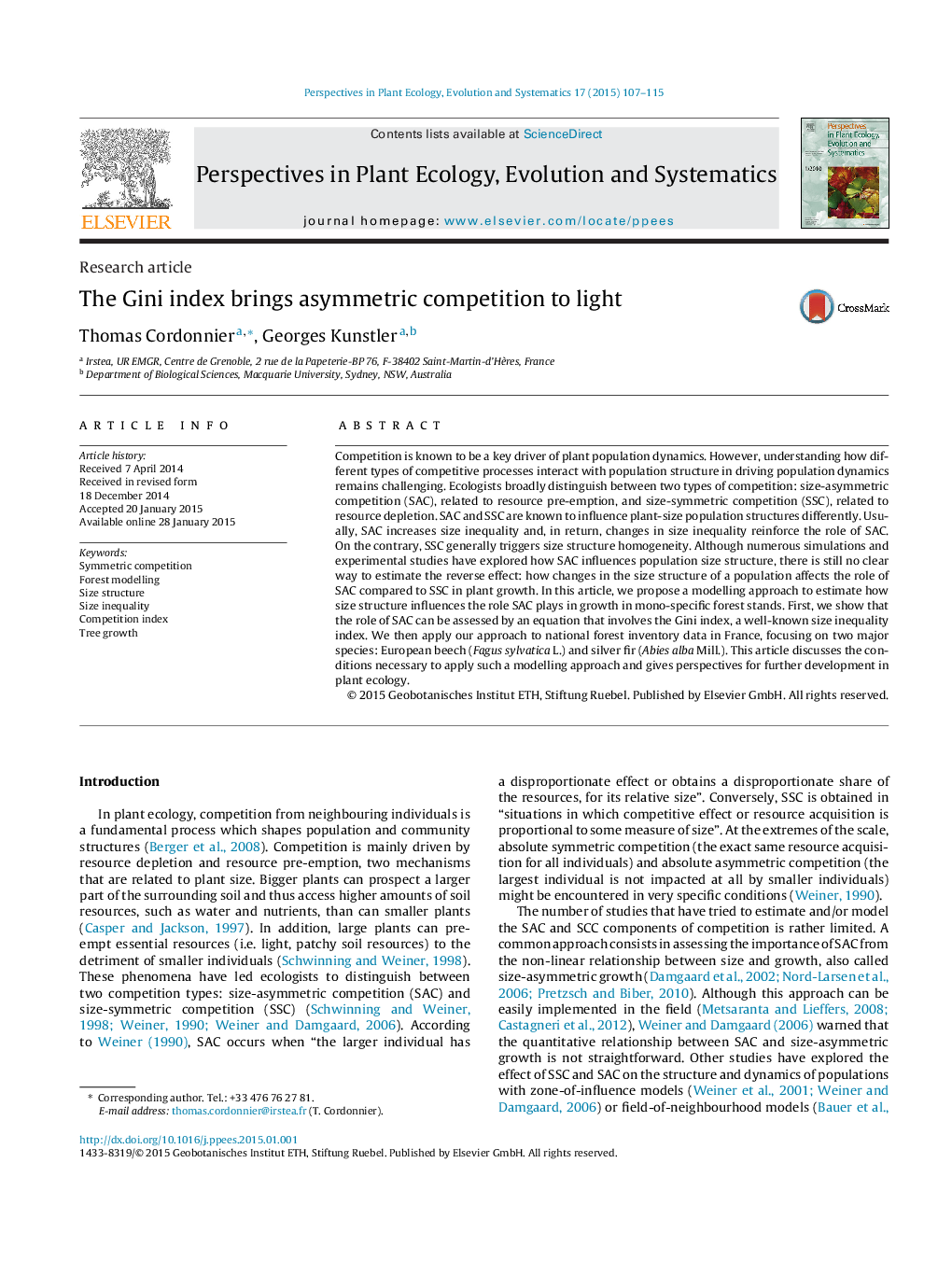| Article ID | Journal | Published Year | Pages | File Type |
|---|---|---|---|---|
| 4400989 | Perspectives in Plant Ecology, Evolution and Systematics | 2015 | 9 Pages |
Competition is known to be a key driver of plant population dynamics. However, understanding how different types of competitive processes interact with population structure in driving population dynamics remains challenging. Ecologists broadly distinguish between two types of competition: size-asymmetric competition (SAC), related to resource pre-emption, and size-symmetric competition (SSC), related to resource depletion. SAC and SSC are known to influence plant-size population structures differently. Usually, SAC increases size inequality and, in return, changes in size inequality reinforce the role of SAC. On the contrary, SSC generally triggers size structure homogeneity. Although numerous simulations and experimental studies have explored how SAC influences population size structure, there is still no clear way to estimate the reverse effect: how changes in the size structure of a population affects the role of SAC compared to SSC in plant growth. In this article, we propose a modelling approach to estimate how size structure influences the role SAC plays in growth in mono-specific forest stands. First, we show that the role of SAC can be assessed by an equation that involves the Gini index, a well-known size inequality index. We then apply our approach to national forest inventory data in France, focusing on two major species: European beech (Fagus sylvatica L.) and silver fir (Abies alba Mill.). This article discusses the conditions necessary to apply such a modelling approach and gives perspectives for further development in plant ecology.
